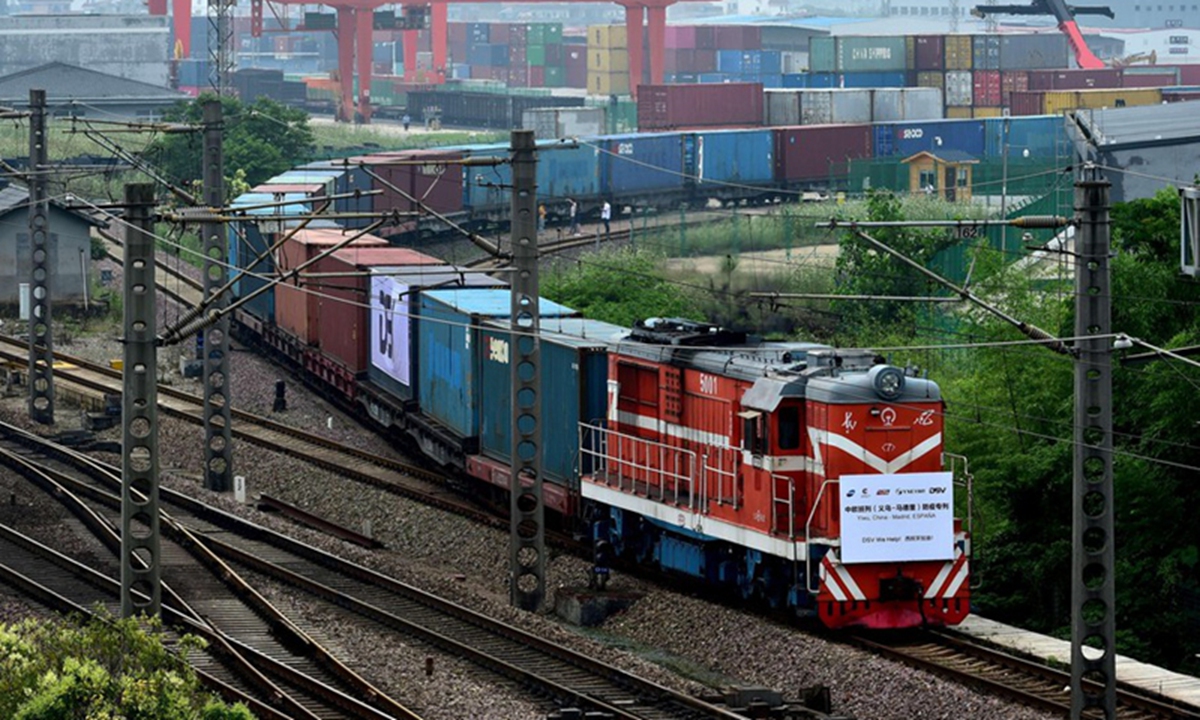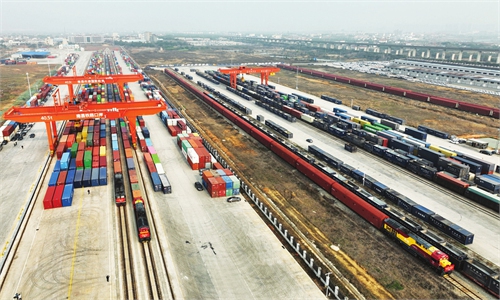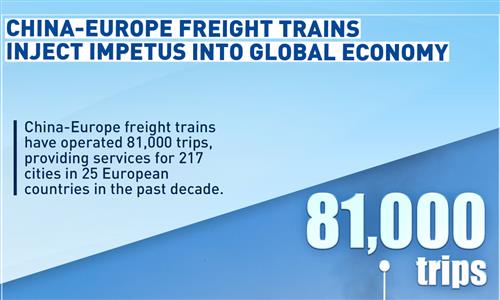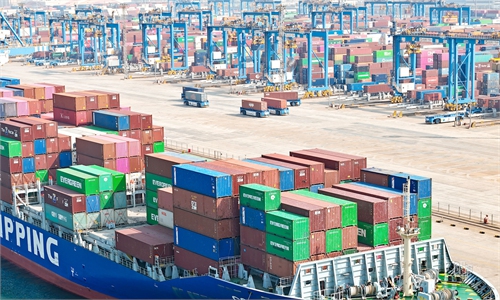
File photo: Xinhua
After a series of attacks on ships in the Red Sea, the logistics industry is facing a new series of challenges. Top logistics firms such as MSC, Hapag-Lloyd, and COSCO have suspended transportation through that route and have resorted to delivering goods via the Cape of Good Hope, as was done in the Middle Ages. The new route is approximately 3,500 nautical miles longer, increasing operating costs and delivery times between Asia and Europe by about nine days. Growing global instability, conflicts in various parts of the world, and the process of deglobalisation contribute to an increase in global risks for maritime cargo transportation, which accounts for up to 90 percent of all international cargo transportation.New shipping challenges are raising the profile of rail transport in trade between China and Europe, which reached 857 billion euros ($945 billion) in 2022 and has the potential to grow further. The explosive growth in rail freight seen in recent years, relative to similar sea transport between China and Europe, is likely to accelerate further.
A shift in the types of goods transported in recent years, with a greater emphasis on high-value goods such as phones, computers and semiconductors, has led to an increase in demand for faster modes of transport compared to ocean freight, as it does not freeze significant capital and reduces insurance premiums.
In 2022, approximately 16,000 freight trains carried goods along the China-Europe route. Despite the decline in global economic activity and war in the middle of Europe, the number of cargo trains increased by 9 percent. The route transported a record-breaking 1.6 million twenty-foot equivalent unit (TEU), representing a 10 percent increase from the previous year. According to China State Railway Group Co, rail traffic continues to rise this year, with 16,145 trains operating on the China-Europe rail route in the first 11 months, up 7 percent year-on-year. A total of 1.75 million TEU were transported, up 19 percent from last year.
Over 90 percent of the railway traffic between China and Europe travels through the Northern Corridor that passes through Russia and Belarus. However, this corridor faces challenges in its development due to political instability and poor infrastructure. European businesses are hesitant to use the transit through Russian territory, and the capacity of Kazakh and Russian railways is insufficient to meet growing demand.
In recent years, much attention has been paid to developing the Middle Corridor, which is much shorter than the Northern Corridor and extends between China, Central Asia, the Caspian Sea, the southern Caucasus, and Turkey to Europe. The cargo transported along this route is increasing, showing record growth in 2022. The cargo volume increased two and a half times compared to the previous year, reaching 1.5 million tons. This route will mainly pass through Turkic-speaking countries and is expected to boost regional trade significantly.
In 2023, several international financial institutions published their reports on the future potential of the Middle Corridor. The World Bank released a report in November stating that the Middle Corridor may triple freight volumes by 2030 and reduce travel times by half. In June, the European Bank for Reconstruction and Development published a report stating that an investment of 18.5 billion euros by 2040 could enable the transportation of 1.4 million TEUs of cargo annually.
In November last year, several countries on the Middle Corridor route set forward policy goals. According to pubslihed information, the annual freight traffic volume along the way should increase fivefold by 2027, reaching up to 10 million tons.
It is well-known that rail transportation through Central Asia is limited by the capacity of the inner railways, which have reached their maximum potential. As a result, the governments of China, Kyrgyzstan, and Uzbekistan decided in 2023 to construct a railway route via Kyrgyzstan territory, eventually connecting with Uzbek railways and leading to Europe via the Caspian Sea. The feasibility study for this project has been completed, and the parties are currently finalising a financial model for the project.
The government of Kazakhstan intends to continue to work actively to improve its rail infrastructure. On December 21, the Prime Minister of Kazakhstan oversaw the start of construction of a new 272 km railway line between Kazakhstan and China. The double-track railway is slated to be operational by 2027, and it is expected to increase capacity between Kazakhstan and China from 28 to approximately 48 million tons per year
The world faces several challenges: political instability, conflicts in different regions, declining globalisation, and division into opposing alliances. These factors increase global risks for maritime cargo transportation, leading to higher transport costs and longer delivery times. As a result, land freight is becoming more critical as an alternative to ocean routes. This shift to land transportation can help improve trade sustainability, secure supply chains, and reduce carbon emissions. Consequently, leaders in the transportation market are starting to pay closer attention to that cargo mode.
Countries need to cooperate and coordinate their efforts to develop railway corridors. They must attract new technological solutions and intellectual and financial investments to improve freight's physical and soft infrastructure. Peace and cooperation between the countries of Eurasia are crucial for the entire continent's successful economic and social development.
The author is the former prime minister of the Kyrgyz Republic, a distinguished professor of the Belt and Road School of Beijing Normal University, a member of Nizami Ganjavi International Centre, and the author of the book "Central Asia's Economic Rebirth in the Shadow of the New Great Game." bizopinion@globaltimes.com.cn



